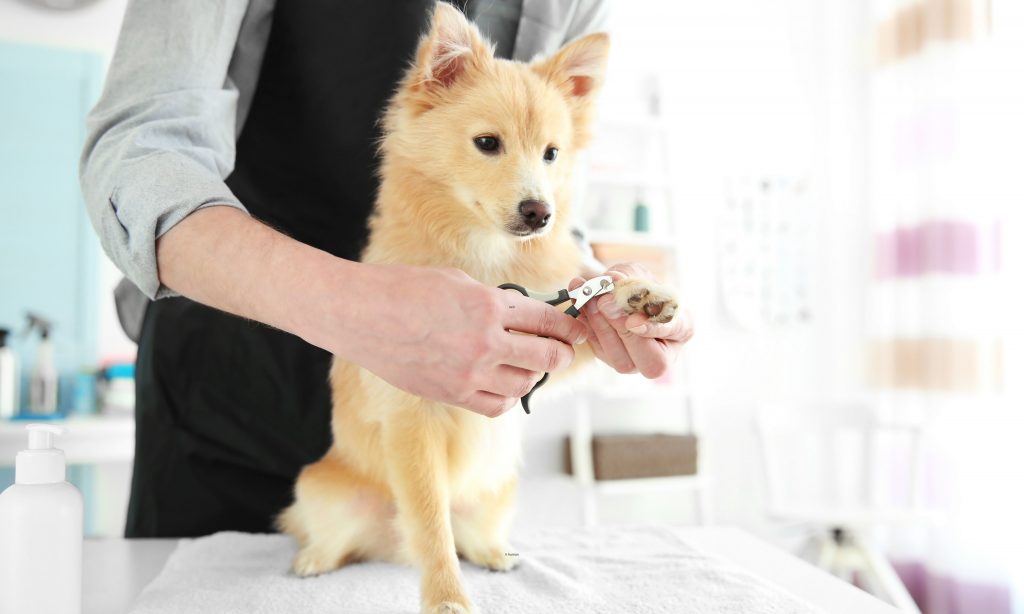The post aims to provide dog parents with information on how to properly treat a broken nail in their dog, as well as provide preventative measures to avoid future occurrences.

Dogs are active creatures and it is not uncommon for them to break a nail from time to time. Broken nails can be painful and leave your dog vulnerable to infection. Knowing how to properly treat a broken nail can prevent further complications and provide relief to your furry friend. In this article, we will discuss first aid and preventative measures for broken nails in dogs.
First Aid for a Broken Nail
- Examine the nail: Check the nail to see if it is partially or completely broken. If the nail is bleeding or your dog is in pain, avoid touching the nail and contact your veterinarian immediately.
- Stop the bleeding: Apply pressure to the broken nail with a clean cloth or gauze to stop the bleeding. You can also use styptic powder or cornstarch to help stop the bleeding.
- Clean the area: Clean the area around the broken nail with a mild antiseptic solution to prevent infection.
- Trim the nail: If the nail is only partially broken, you can trim the broken part of the nail with a pair of clippers. Be sure to avoid the quick, pink part of the nail that contains blood vessels and nerves.
- Protect the nail: Protect the broken nail with a small bandage or a dog bootie to prevent further injury and keep it clean.
Preventative Measures for Broken Nails
- Regular nail trims: Keeping your dog’s nails trimmed can prevent them from breaking or splitting. You can trim your dog’s nails at home or take them to a groomer or veterinarian for a professional trim.
- Avoid rough surfaces: Dogs who frequently walk on rough surfaces such as concrete or gravel are more likely to break their nails. Try to avoid these surfaces or protect your dog’s paws with booties.
- Provide a healthy diet: A healthy diet rich in essential vitamins and minerals can help maintain healthy nails and prevent them from becoming brittle.
- Observe your dog’s behavior: If your dog is a chewer or likes to dig, it may be more prone to breaking its nails. Observe their behavior and take steps to discourage destructive behavior.

When to See a Veterinarian
If your dog’s nail is completely broken or bleeding heavily, or your dog is in severe pain, it is best to seek veterinary care immediately. Your veterinarian can provide pain relief and may need to remove the nail or provide additional treatment.
Conclusion
Broken nails in dogs can be painful and leave your furry friend vulnerable to infection. With proper first aid and preventative measures, you can treat a broken nail and prevent further complications. Regular nail trims, avoiding rough surfaces, providing a healthy diet, and observing your dog’s behavior can help prevent broken nails. If you suspect a broken nail or your dog is in pain, contact your veterinarian immediately for proper treatment.
We hope this article has provided you with helpful information on how to treat your dog’s broken nail. If you have any questions or concerns, feel free to chat with us on our website.

Frequently Asked Questions:
What are the signs that my dog has a broken nail?
Signs that your dog has a broken nail include limping, licking, or chewing at their paw, bleeding, and visible signs of a broken or cracked nail.
How can I treat my dog’s broken nail at home?
If the broken nail is bleeding, use a clean cloth or towel to apply pressure to the affected area. You can also apply styptic powder to help stop the bleeding. Trim any loose or broken parts of the nail, and keep the paw clean and dry. If your dog is in pain or the nail is severely broken, it’s important to seek veterinary care.
What should I do if my dog’s nail is infected?
If you notice signs of infection such as swelling, redness, discharge, or a foul odor, it’s important to take your dog to the vet. Your vet may prescribe antibiotics or other medications to treat the infection.
How can I prevent my dog from breaking its nails in the future?
Regularly trim your dog’s nails to keep them at an appropriate length. Keep your dog’s environment safe and free from hazards that could cause injury to their paws. Avoid excessive or vigorous exercise on hard surfaces, which can increase the risk of nail damage.



